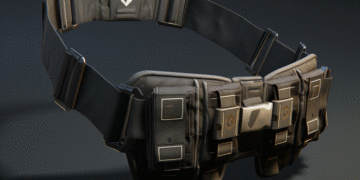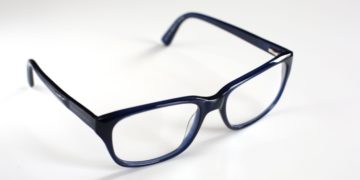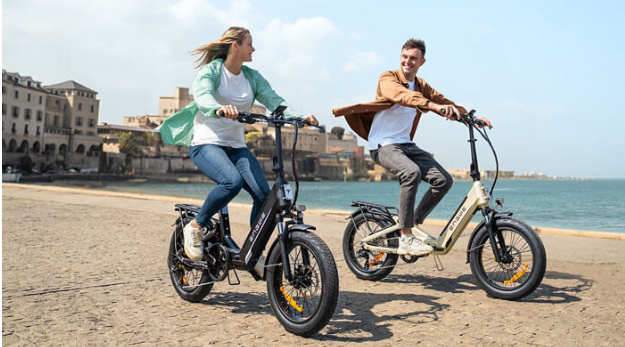Step-through bikes of today have evolved beyond the ease of mounting convenience of their predecessors. These accessible rides match the step-over bike’s abilities with speeds of 20 mph. Their practical benefits in everyday use have helped make them attractive to riders across the board.
Step-over and step-through bicycles both offer unique advantages to riders. Step-over bicycles are best at durability and trail use. Step-through bicycles are best at accessibility and comfort, thus working well for riders with mobility impairments or those who get dressed up.
We’ll take you through a step-by-step breakdown of the two bikes. Your personal needs and riding style will determine the best choice as we discuss their design and performance.
Step-Through and Step-Over eBikes: Anatomy and Design
There are different eBike frame types, with the main variation being in geometry. Step-through frames have a lowered or non-existent top tube with an opening. This permits riders to mount up by stepping over the frame. Step-over frames retain the classic diamond configuration with a horizontal top tube, so riders need to lift their leg over the bike.
The history of step-through frames traces back to the late 19th century. The frames were initially produced to assist women who had on long skirts and restrictive clothing. This cutting-edge design provided women with greater freedom and mobility in the 20th century. The step-over design gained popularity with men’s bicycles, although present-day riders of both sexes employ both designs.
The frame construction plays an important role in the performance of an eBike. Step-over frames are more stable and stiffer, hence perfect for rough roads and aggressive riding. The frame provides improved power transfer from the rider to the bike. Two triangles that are combined in the traditional design naturally make it stronger.
Current materials have advanced step-through frames a long way. Manufacturers now make other frame sections rigid to counteract the absence of a top tube. Such advancements have taken care of the issues with frame stability in response to different weights and pressures in the past.
Each of these designs has space to accommodate motors and batteries. Mid-motors get space around the bottom bracket, hub motors get space at the rear wheel, and batteries tend to ride along frames. High-end eBikes now have batteries built into the frame. This looks more pleasing and puts weight evenly for better balance.
Rider Experience: Comfort and Accessibility Factors
Step-through electric bike riding is all about access. Step-through electric bikes enable the rider to step through the frame of the bike as opposed to swinging their leg over a high crossbar. The simple design offers a cycling solution for riders with different levels of mobility.
Step-through cycles are an ideal way of readapting to cycling in case you have mobility limitations or joint problems. You will not need to exert lots of physical dexterity since there is not a high top tube. They are ideal for older users, recovering injury patients, or people with specific disabilities.
The step-through design accommodates many types of clothing. You can ride peacefully in business suits, dresses, and skirts with no risk of tears or exposure. The upright position of the bike also reduces back and shoulder strain on long rides.
Urban residents find these bicycles especially handy. Quick dismounts at traffic lights and intersections are a breeze – a valuable feature in busy city streets. The design is also handy when shopping for groceries or packages since you don’t have to awkwardly swing your leg holding items.
Step-over bikes demand more flexibility to mount but provide more stability during ride. Their traditional frame offers more rigidity and strength, which is beneficial on rough roads. Even with that, step-through bikes are best suited for everyday commutes and casual rides on which comfort outweighs performance.
Your own priorities will determine the final decision. Step-through bicycles are better suited for simple access, frequent stopping, and daily clothes suitability with an upright riding stance. The old-school step-over type will suit best if performance on diverse terrain and maximum frame stability are top on your list.
Performance Analysis: Terrain and Riding Style Compatibility
Your terrain type and riding requirements significantly dictate the best frame style to choose. Step-over frames are mostly prevalent in unfavorable conditions where their triangular shape is most maximized.
Step-over frames’ triangle shape gives excellent benefits to riders for mountain biking and rough terrain riding:
- Better shock absorption on uneven surfaces
- Better stability when going downhill
- Better handling on technical sections
- Better resistance when meeting uneven forces
Off-road bikers and performance cyclists favor step-over types because they handle better. The rigid frame gives a sensitive ride on tough trails, which suits thrill riders and performance riders.
City streets are where step-through bicycles really excel. Step-throughs allow easy dismounting at traffic lights and navigating stop-and-go traffic. Both feet can be placed on the ground immediately when stopping, which is very helpful in urban areas.
Both types of frames perform differently for hauling heavy loads or for touring. Step-over frames weight more evenly with heavy panniers and have more points to mount accessories. They flex less under a load, which makes them ideal for long tours and bike-packing trips.
Step-through frames are ideal for delivery riders and city riders who tend to load things extensively. The rider does not need to raise his leg above a raised bar in mounting, even with rear luggage. This matters because this means that there is less of a chance for tripping over items when grocery shopping or lugging large pieces of furniture. If you are considering this model, then you might want to take a look at the Engwe MapFour N1 Air ST. It has an easy-on/off frame, making it suitable for daily travel.
Weather impacts which frame is best as well. Step-through frames become even more convenient in winter or rainy periods. Cyclists can easily set both feet down for equilibrium when necessary.
Conclusion
Step-through and step-over eBikes serve different riding needs and priorities. Our rigorous examination reveals that step-through frames perform best in urban environments and are preferred as a way of gaining accessibility and utilitarian benefits for everyday riders. The bikes support riders who have mobility limitations or require frequent stops in metropolitan traffic.
Step-over frames are the traditional diamond style and remain the favorite among performance riding and trail riding. They have a stiff design, which offers better stability and power transmission, and they are perfect for mountain bikes and touring.
The latest technology has resolved most of the past concerns over the durability of step-through frames. Both styles now utilize high-tech materials and clever component positioning that ensure equal performance under all types of riding conditions.
Your personal needs will determine which design is most suitable for you. Think of your average conditions of riding, what you’ll be wearing, and your physiological needs before a choice is made. Step-through frames are suitable in urban surroundings where you frequently need to mount and dismount. Step-over frames are best suited for sports cycling and cross-country adventures.
These eBikes make excellent options for modern cyclists seeking fast, hassle-free travel. Let your riding style and your lifestyle guide your choice to select an eBike that will upgrade your cycling experience.











































































